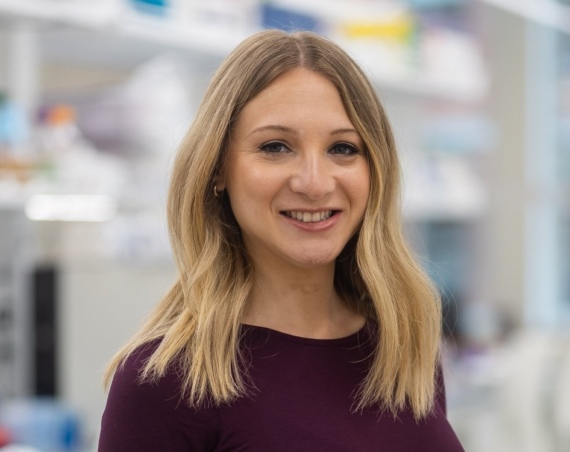
After a 30-year career spanning academia, government, corporate leadership, and non-profit environments, Seema Kumar has developed a unique perspective on what it takes to transform healthcare. Now, as CEO of Cure, a healthcare innovation campus in New York City, she’s putting that comprehensive vision to work.
“I’ve had the privilege of seeing healthcare from virtually every angle – research labs, government agencies, corporate boardrooms, and now at Cure,” says Kumar. “What’s become increasingly clear is that to truly succeed in healthcare innovation, we must break down the silos that have traditionally kept these sectors separated.”
This philosophy guides Cure’s mission as it houses 18 on-campus startup and established companies. But Kumar emphasizes that Cure offers far more than just office space. “When I was at Johnson & Johnson helping launch JLABS, I learned that entrepreneurs don’t come just for the physical space – they come for the support and connections,” Kumar explains. “We’ve incorporated those learnings into the ecosystem we’re building at Cure, which functions as an accelerator but also as a true community hub.”
Cure supports innovators across medtech, healthcare services, and life sciences, providing not just laboratory and business facilities but crucial connections to expertise. Kumar has observed that many brilliant health innovators struggle not with scientific knowledge but with commercialization pathways.
“Health innovators often sit on these amazing ideas but sometimes miss the business acumen, commercial experience, or access to investors needed to bring them to fruition,” says Kumar. “At Cure, we aim to fill those gaps.”
Women’s Health: The Trillion-Dollar Opportunity
Among the areas Cure is focusing on, women’s health stands out as one of the most promising yet underserved markets. Kumar references last year’s McKinsey report that identified a $1 trillion opportunity in women’s health – a figure that has galvanized interest but now requires strategic focus to translate into real-world solutions.
“Women’s health represents one of the biggest untapped opportunities in healthcare today,” Kumar notes. “But we need to break down this trillion-dollar potential into actionable segments where entrepreneurs can focus their efforts and investors can see clear returns.”
Kumar believes that cardiovascular disease and autoimmune conditions represent two particularly promising areas within women’s health. “Cardiovascular disease is expensive to treat and remains the number one killer of women, yet we still don’t have enough sex-specific research or targeted solutions,” she explains. “Similarly, autoimmune conditions disproportionately affect women, creating another significant opportunity for innovation.”
From Conversation to Action to Cures
Later this month, Cure will host the Power of X Summit, bringing together researchers, entrepreneurs, investors, and industry leaders with the theme “From Conversation to Action to Cures” – a progression that mirrors Kumar’s own career journey from science communication to healthcare leadership.
“The statistics are stark – only 4% of healthcare R&D funding goes to women’s health despite the massive potential impact,” Kumar says. “At the Summit, we’re not just highlighting this disparity again – we’re bringing together the right mix of scientists, investors, and entrepreneurs to develop funding strategies and commercial frameworks that can actually move the needle in key areas like brain health, cardiovascular disease, and oncology.”
The Summit will focus on three main objectives: Identifying actionable steps to close the gender research gap, making the investment case for women’s health, and providing direct support to innovators through a pitch competition in partnership with the Catalyst Impact Fund, where finalists can receive up to $100,000 in non-dilutive funding.
Kumar believes that one of the fundamental challenges in women’s health innovation is the foundational research gap. “Investors want returns, and investing in foundational research can take years to yield results. This is especially challenging in women’s health, where we don’t have as many later-stage assets ready for investment today,” she explains. “We need more non-dilutive funding to close these early research gaps and build a stronger pipeline of opportunities.”
Breaking Down Silos
Throughout her career, Kumar has seen how siloed approaches hamper innovation, and she’s committed to breaking down these barriers at Cure.
“For a successful startup, you need scientific leadership with a breakthrough innovation, commercial leadership that understands the market, and the data to make a compelling business case,” Kumar says. “Too often, these elements exist in isolation from one another.”
Cure aims to be the connective tissue between these worlds – bridging gaps between startups and investors, young innovators and experienced professionals, researchers and the private sector.
“My vision is that Cure will be recognized as the go-to place for those with bold ideas to move healthcare forward,” Kumar explains. “Of course, we’ll measure our success in businesses supported and capital raised, but ultimately our impact will be measured in benefits to patients and society as a whole.”
As Kumar leads Cure forward, she brings with her not just professional expertise but personal passion. Outside of her work at Cure, she founded SEEMA, the largest multi-dimensional platform focused on connecting and empowering South Asian women globally. This commitment to empowerment and representation informs her leadership at Cure as well.
“At the end of the day, healthcare innovation isn’t just about new technologies or treatments – it’s about transforming conversations into action, and action into cures,” Kumar says. “That’s the journey I’ve been on throughout my career, and it’s the journey we’re committed to at Cure.”



